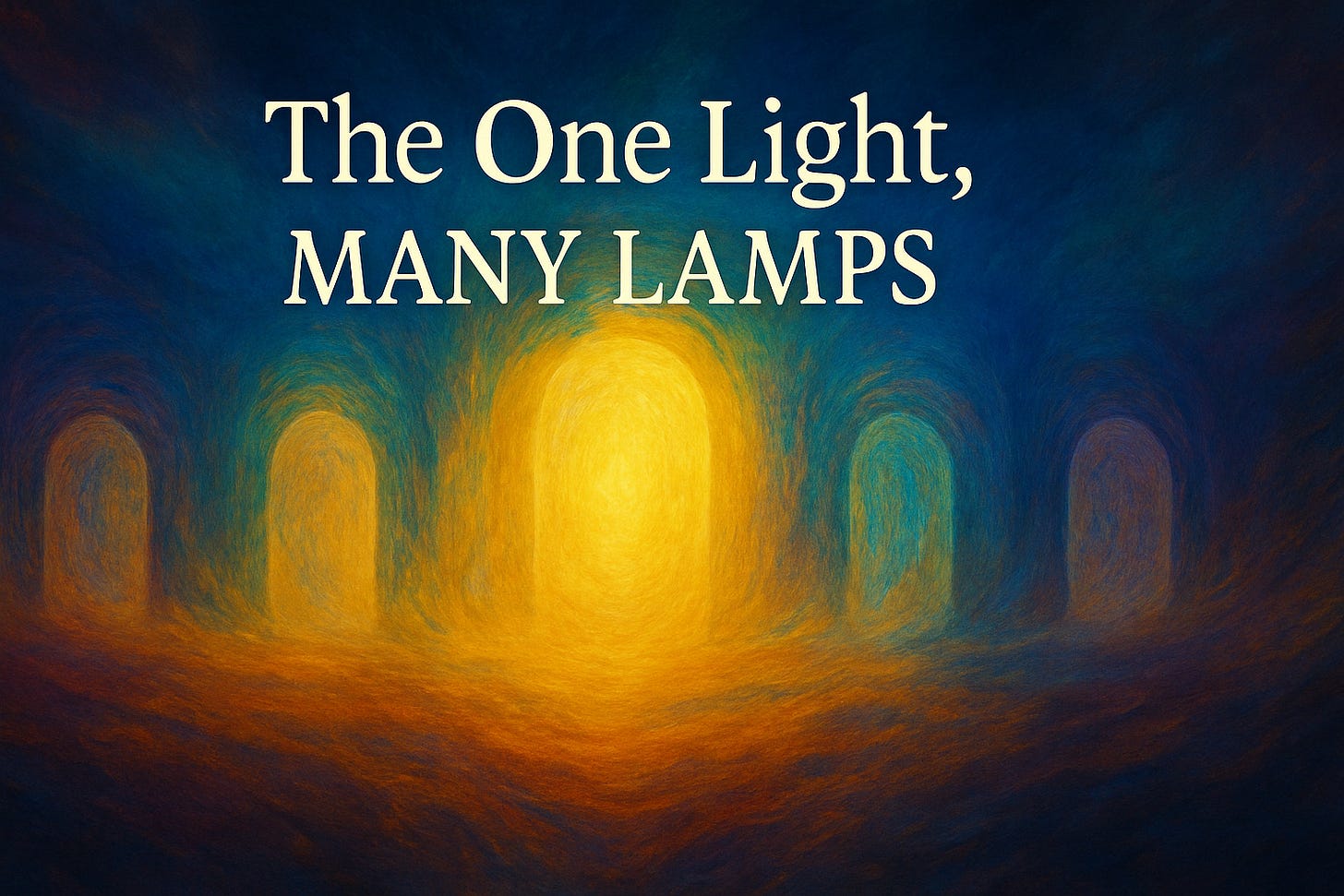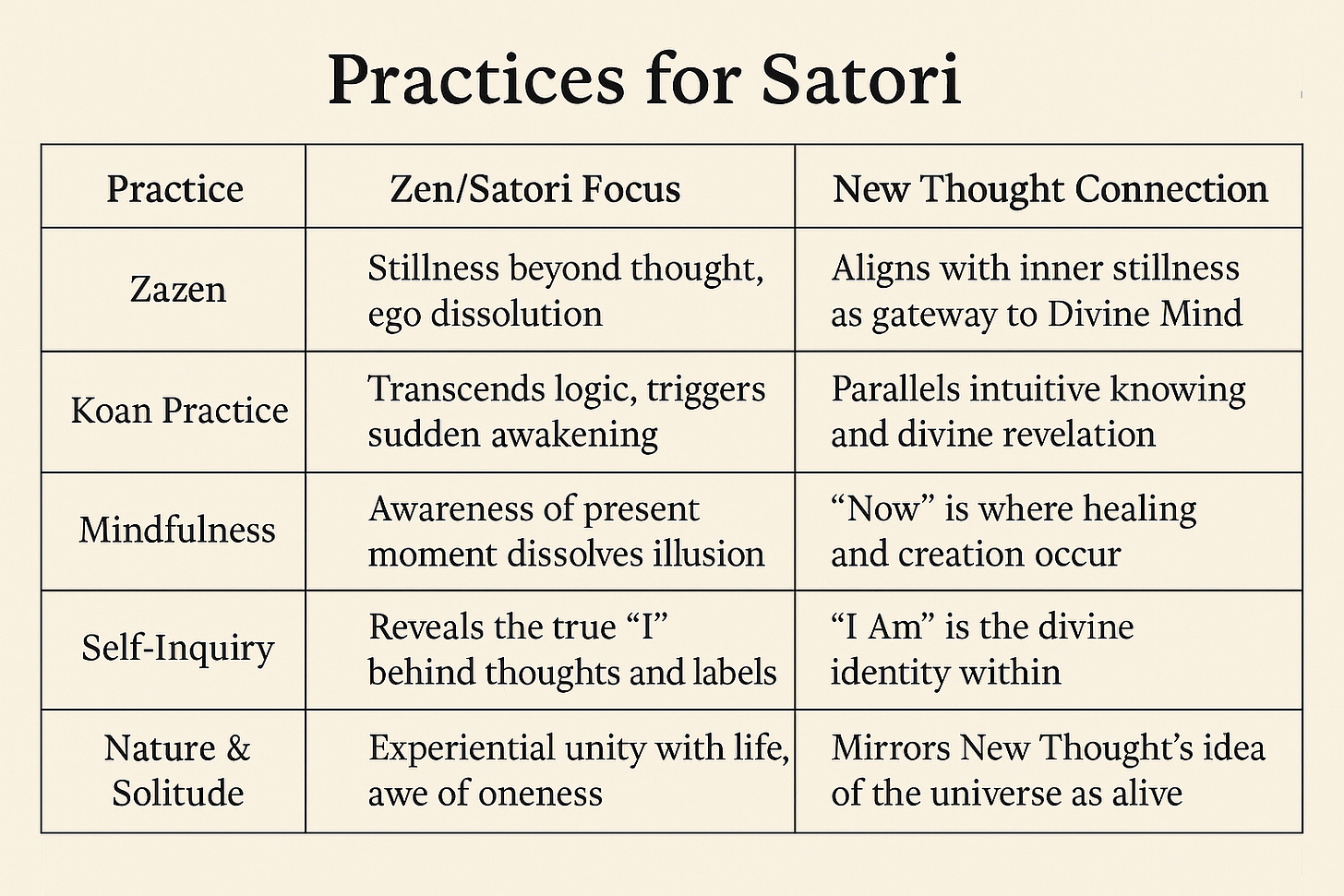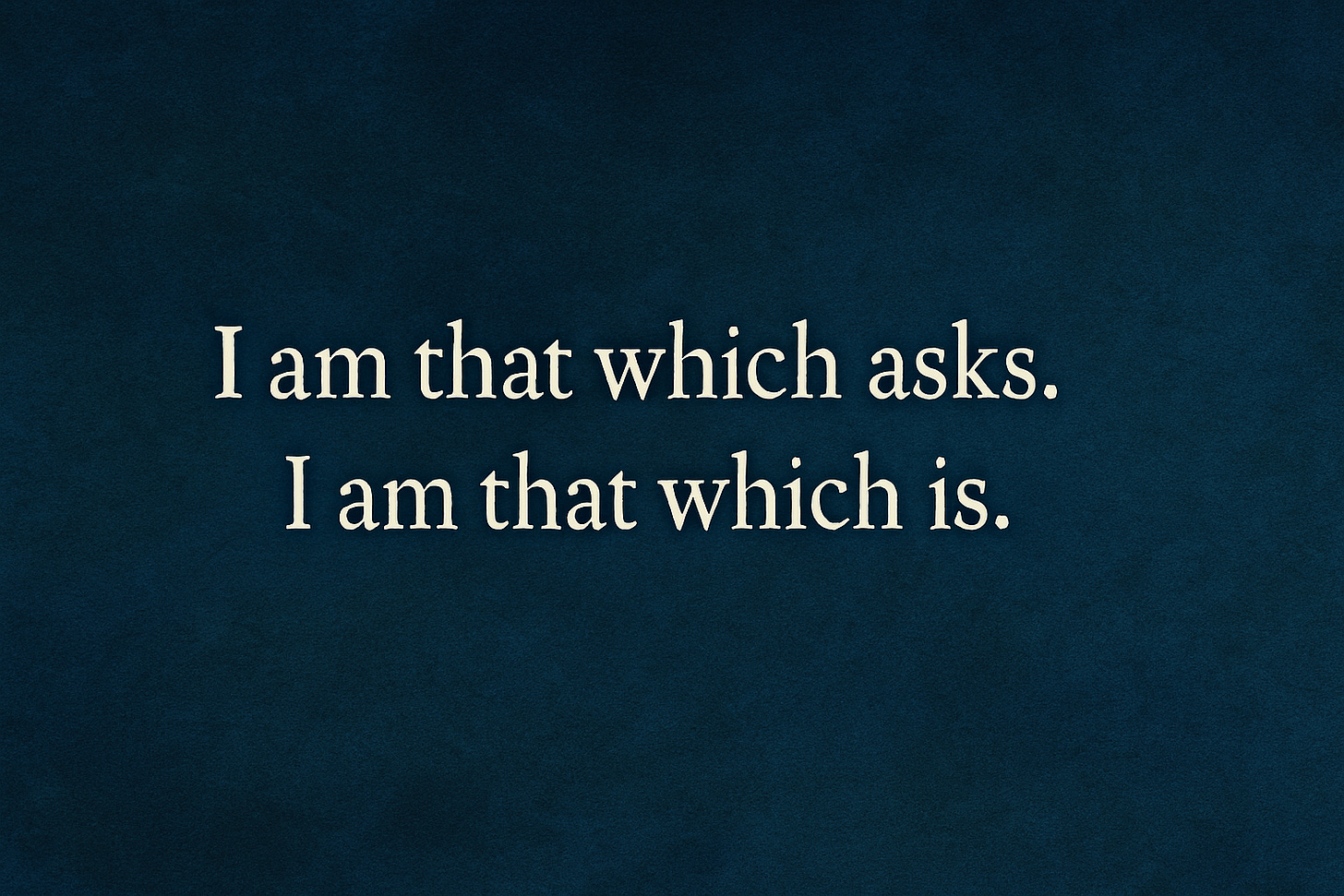The Five Gates of Awakening: A Guide to Cosmic Awakening (Satori) through New Thought and Zen
A Journey through Stillness, Paradox, and Presence to Remember Who You Truly Are
“The goal is not to solve but to dissolve, to crack open the ego's grip on certainty.”
Awakening is not a destination but a shift, a falling away of illusion and a return to what was always true. In Zen, this is called satori, a sudden flash of realization. In New Thought, it is the conscious alignment with the Infinite, the "I Am" at the core of being. Though they speak different languages, both traditions aim at the same mystery: the unfiltered experience of truth beyond thought.
Below are five powerful gates that lead to awakening, practiced across time by seekers of truth. Each one not only opens the door to satori but aligns with the universal principles taught in New Thought.
Zazen: Entering the Still Point
Zazen, or seated meditation, is the heart of Zen. One simply sits, breathes, and watches. Thought arises and passes. Feelings come and go. In time, the watcher becomes aware of watching itself.
Satori often comes when the mind lets go. This is not about trying. It is about resting in what already is.
In New Thought, this stillness is sacred. It is the silence where Divine Mind speaks. Zazen trains us to listen, not with ears but with presence. It reveals that Spirit was never absent, only drowned in noise.
"Zazen was where everything fell away," says Adam Liu, a long-time practitioner. "I was sitting in a retreat, and I suddenly felt as though I had never left home. The mind dropped. It was just breath, space, and a sense of absolute belonging."
Koans: Breaking the Trap of Logic
Koans are riddles without solutions, like "What is the sound of one hand clapping?" They are meant to short-circuit rationality. The goal is not to solve but to dissolve, to crack open the ego's grip on certainty.
When the mind collapses under the weight of paradox, awakening slips through.
New Thought also transcends logic. It teaches that intuition is higher than reason, and that spiritual truths are felt, not deduced. A koan mirrors New Thought affirmations: not linear, but vibrational. It invites us into knowing beyond thinking.
"It was the koan 'Mu' that changed everything for me," says Renée Takahashi, a Zen student for over a decade. "I kept asking it, not to get an answer, but to burn away everything false. Then, in a moment of laughter, the barrier broke. There was no 'me' left to ask."
Mindful Presence: Returning to the Now
Mindfulness is simple. It is noticing. The breath, the body, the moment. Not controlling, not judging, just being.
This opens the door to satori because the present moment is the only place reality exists. Past and future are mind-made illusions. Here and now, we are already whole.
New Thought teaches that God operates only in the now. Healing happens here. Creation happens here. Mindfulness aligns our vibration with this eternal present. It is the practice of choosing our thoughts, our awareness, our truth.
"I spent years chasing spiritual experiences," recalls Mark Devine, a meditation teacher. "But when I committed to being mindful while washing dishes, walking the dog, or brushing my teeth, something shifted. Life started to glow. I realized I didn’t need to chase anything, I was already it."
Self-Inquiry: The Path of the Question
Ramana Maharshi taught a single question: Who am I? Not philosophically, but inwardly. When asked sincerely, it strips away all false identities. What remains is pure awareness.
Satori arrives when we see that the one asking is the answer. There is no separate self, only the light behind the lens.
New Thought affirms the same: I Am is the name of God within. To know oneself as "I Am" is to awaken to the Divine Idea. Self-inquiry is not self-analysis. It is self-remembrance.
"Self-inquiry shattered everything I thought I knew," shares Lila Ortiz, a holistic therapist. "One morning, I sat with the question, who am I?, until tears came. Then silence. Then laughter. There was no answer, but there was a knowing. I am that which asks. I am that which is."
Nature and Solitude: Remembering the Greater Whole
When we step into nature, we step out of the man-made mind. The forest, the stars, the sea, these do not argue. They reveal.
In solitude, the walls between self and world grow thin. The boundary dissolves. One feels the breath of the earth in their lungs.
New Thought teaches that the universe is a living mirror of consciousness. Nature reflects our divinity. Solitude does not isolate, it reconnects. Here, many have found their deepest satori, not in temples but under trees.
"I was hiking alone in the White Mountains when it happened," says Elijah Moon, a spiritual naturalist. "I stopped and looked at a tree. It looked back. Or rather, the whole world was looking through me. There was no separation. I dissolved into the whole, and it was love."
Conclusion: The One Light, Many Lamps
Whether through Zen's stillness or New Thought's affirmation, these five practices guide us toward the same awakening. Each technique trains the mind to surrender its illusion of separateness. Each reveals the truth that consciousness is not inside us. We are inside it.
In the end, satori is not an achievement but a return. A dropping of masks. A homecoming to what we have always been: infinite awareness expressing itself as form.
Further Reading
"The Untethered Soul" by Michael A. Singer
"Zen Mind, Beginner's Mind" by Shunryu Suzuki
"The Power of Now" by Eckhart Tolle
"The Science of Mind" by Ernest Holmes






